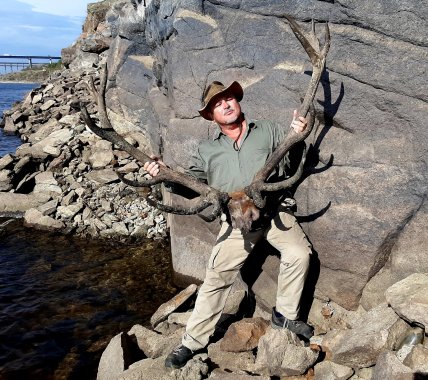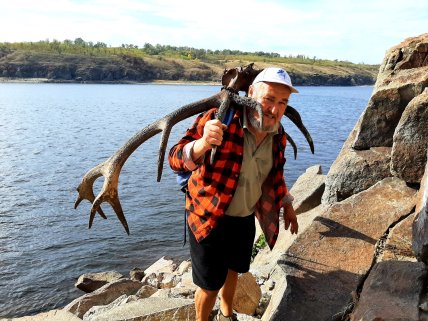Giant deer antlers, estimated to be at least 200 years old, were discovered on Khortytsia Island. (See photos)
Two residents of Zaporizhzhia discovered massive deer antlers in the Old Dnipro River near Khortytsia Island. The men believe that the find is at least 200 years old.
The hunters stumbled upon the deer antlers on October 10. This was reported by Valeriy Kemenov on his Facebook page. He shared photographs and details of this unique discovery.


Details of the Discovery
Valeriy Kemenov, along with his colleague Serhiy Shishkov, found a deer skull with antlers while exploring the bottom of the Old Dnipro River. According to Kemenov, these antlers belonged to a red deer (Cervus elaphus), which was once common in this region.
"Once upon a time, there were deer with such!!! antlers living on Khortytsia", Kemenov wrote in his post, emphasizing the enormous size of the find.
The age of the discovery is estimated to be at least 200 years. This is attributed to the fact that the population of red deer in this region was nearly wiped out in the 19th century.
About the Red Deer
The red deer (Cervus elaphus), also known as the forest deer, is a majestic member of the deer family. These animals are renowned for their impressive antlers, which are shed and regrown annually. Male red deer can weigh up to 300 kg, and their antlers can sometimes exceed one meter in length.
These graceful creatures have a slender body, long legs, and a short neck. Their fur color changes with the seasons: in summer, it is typically reddish-brown, while in winter it turns grayer.
In the wild, deer live 12-14 years, while in captivity, they can reach 25-30 years. Females generally live longer than males.
As a reminder, "Telegraf" previously reported that bones of an extinct animal thousands of years ago were found in Zaporizhzhia. Unique finds were sent for research and further conservation.